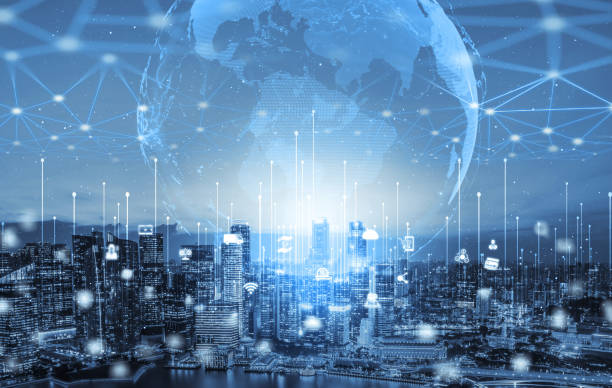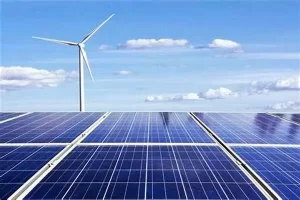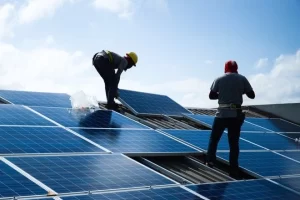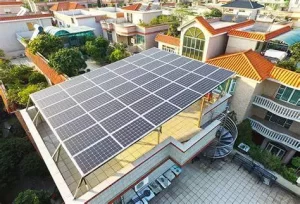Future-Proofing Urban Infrastructure: How Telecom and Energy Solutions Are Shaping Tomorrow's Cities
As urban areas continue to expand and evolve, the need for future-proof infrastructure has never been more critical. Modern cities face a host of challenges, including growing populations, environmental concerns, and the need for enhanced connectivity. To address these issues, telecom and energy solutions are playing a pivotal role in shaping the cities of tomorrow. This article explores how these solutions are transforming urban infrastructure, ensuring resilience, efficiency, and sustainability for future generations.

1.The Evolution of Urban Infrastructure
Urban infrastructure encompasses the foundational systems and services that support daily life in cities, including transportation, utilities, and communication networks. As cities grow, traditional infrastructure often struggles to keep pace with increased demand and technological advancements. Future-proofing urban infrastructure involves integrating innovative technologies and solutions to ensure that cities can adapt to future needs and challenges.
2.The Role of Telecom Solutions in Future-Proofing Cities
2.1. Enhanced Connectivity
Telecom solutions are fundamental to the development of smart cities, where seamless connectivity is essential for the operation of various systems and services. The rollout of 5G technology is a significant advancement, offering high-speed data transfer, low latency, and increased network capacity. This next-generation network supports a wide range of applications, from autonomous vehicles to smart infrastructure.
Enhanced connectivity provided by telecom solutions enables real-time communication between devices, sensors, and control systems. For instance, smart traffic management systems rely on continuous data exchange to optimize traffic flow and reduce congestion. Similarly, connected public safety systems improve emergency response times and enhance overall security.
2.2. Data-Driven Decision Making
Telecom infrastructure facilitates the collection and transmission of vast amounts of data, which is crucial for informed decision-making in urban management. Advanced data analytics tools process this data to generate actionable insights, allowing city planners and administrators to address issues proactively and make data-driven decisions.
For example, smart utility meters provide real-time data on energy and water usage, enabling more efficient resource management and reducing waste. Predictive analytics can forecast demand and identify potential issues before they arise, leading to improved service delivery and operational efficiency.
2.3. Internet of Things (IoT) Integration
The Internet of Things (IoT) is a key enabler of smart city solutions, connecting a multitude of devices and sensors to the internet. Telecom networks provide the infrastructure needed to support IoT devices, allowing them to communicate and share data.
IoT applications in smart cities include smart lighting, which adjusts brightness based on ambient conditions and occupancy, and smart waste management, which optimizes collection routes based on real-time data from sensors in waste bins. These applications enhance city operations and contribute to a higher quality of life for residents.
3.The Role of Energy Solutions in Future-Proofing Cities
3.1. Smart Grids and Energy Management
Energy solutions are critical for managing the increasing demands of urban environments while promoting sustainability. Smart grids represent a major advancement in energy management, incorporating digital technology to monitor and control electricity distribution more effectively.
Smart grids enable real-time monitoring of energy consumption, automated fault detection, and dynamic load balancing. This technology helps cities manage energy resources more efficiently, reduce outages, and integrate renewable energy sources. For instance, smart grids can balance energy supply and demand by adjusting distribution based on real-time data, ensuring a reliable and sustainable energy supply.
3.2. Renewable Energy Integration
Integrating renewable energy sources, such as solar, wind, and geothermal power, is essential for reducing greenhouse gas emissions and achieving long-term sustainability goals. Energy solutions facilitate the incorporation of these sources into urban infrastructure, contributing to cleaner and more resilient energy systems.
Urban areas are increasingly investing in renewable energy projects, such as solar panels on rooftops and wind turbines in urban parks. Energy management systems optimize the use of renewable energy by predicting generation patterns, managing storage, and distributing power efficiently. This integration helps reduce reliance on fossil fuels and supports the transition to a more sustainable energy future.
3.3. Energy Efficiency and Demand Response
Energy efficiency is a key component of future-proof urban infrastructure. Energy-efficient technologies, such as LED lighting and high-efficiency HVAC systems, reduce overall energy consumption and lower operational costs.
Demand response programs are another important energy solution, allowing cities to manage energy consumption during peak periods by incentivizing users to reduce or shift their usage. These programs help balance supply and demand, prevent grid overloads, and support the integration of renewable energy sources.
4.Synergy Between Telecom and Energy Solutions
The integration of telecom and energy solutions creates a synergistic effect that enhances the functionality and resilience of urban infrastructure. Here’s how this synergy benefits cities:
4.1. Integrated Systems
Telecom and power solutions work together to create integrated systems that improve overall city operations. For example, smart grid technologies rely on telecom networks for data transmission and control signals. Similarly, smart city applications, such as intelligent transportation systems and energy management solutions, use telecom infrastructure for real-time communication and data exchange.
4.2. Enhanced Resilience and Flexibility
The combination of telecom and energy solutions enhances the resilience and flexibility of urban infrastructure. For example, smart grids with advanced telecom connectivity can quickly detect and respond to power outages or disruptions. Similarly, IoT-enabled sensors and devices provide real-time data that helps cities adapt to changing conditions and manage resources more effectively.
4.3. Improved Quality of Life
By integrating telecom and energy solutions, cities can offer a higher quality of life for residents. Smart city applications, such as efficient public transportation, improved air quality monitoring, and enhanced public safety, contribute to a more livable and sustainable urban environment.
5.Challenges and Considerations
While telecom and energy solutions offer significant benefits, there are challenges to address:
Infrastructure Costs: Developing and maintaining advanced telecom and energy infrastructure requires substantial investment. Cities must carefully plan and allocate resources to ensure a positive return on investment.
Data Security and Privacy: The vast amount of data generated by smart city systems raises concerns about security and privacy. Implementing robust cybersecurity measures and protecting sensitive information is essential.
Interoperability and Standards: Integrating diverse technologies and systems requires ensuring interoperability and adherence to standards. Cities must address compatibility issues and ensure seamless operation across different platforms.
Conclusion
Future-proofing urban infrastructure involves integrating telecom and energy solutions to create resilient, efficient, and sustainable cities. Enhanced connectivity, smart grids, and renewable energy integration are key components of this transformation. By leveraging these solutions, cities can address current challenges, adapt to future needs, and improve the quality of life for their residents. As urban areas continue to evolve, the synergy between telecom and energy technologies will be crucial in shaping the cities of tomorrow and ensuring their long-term success.
Contact us
- Email:[email protected]
- Tel: +86 13651638099
- Address: 333 Fengcun Road, Fengxian District, Shanghai
Get A Quote Now!
Related product links are available directly
Site storage products:Site storage products 归档 – (energystoragecontainer.com)
Lithium Battery:Lithium Battery 归档 – (energystoragecontainer.com)
Read more

Unveiling Photovoltaic+Energy Storage: Four Major Application Scenarios Leading the Future of Energy
In this way, the energy landscape is evolving, and one of the most thrilling developments in renewables is the integration of photovoltaics energy storage.

From Theory to Practice: Four Methods for Estimating Photovoltaic Power Generation
Photovoltaic power generation has become an essential part of modern energy solutions, particularly in home solar systems and distributed power applications

Rack-Mounted Lithium Iron Batteries: Creating Efficient and Reliable Energy Storage Solutions
When it comes to modern energy solutions, rack-mounted lithium iron batteries are taking center stage in a variety of industries. Whether you’re powering data centers, stabilizing energy for households, or keeping critical systems online at 5G base stations, these batteries have become the unsung heroes of our electrified world.

Late Night Energy Saving Tips: How to Maximize Electricity Savings During Off-Peak Hours
With rising energy costs, homeowners are increasingly exploring innovative ways to save on their electricity bills. One effective approach is utilizing off-peak hours—times when electricity rates are significantly lower due to reduced demand.
